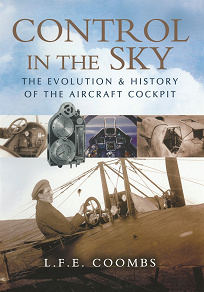E-bok
Control in the Sky
In the first early years of aviation, the control systems and instruments found in a typical aircraft cockpit were few and simple, but did form the basic pattern of requirements still used today. Although pioneering aeroplanes seldom achieved speeds above 100 mph or reached altitudes above 10,000 feet, pilots still required reliable information on speed, altitude, attitude, engine condition and compass direction. Instruments and controls were designed and positioned for mechanical convenience rather than pilot comfort. This situation continued well into the 1930s and then the remarkable increase in aircraft performance created during World War II generated an altogether different working environment for pilots who now had to cope with a multitude of information sources and far more sophisticated control mechanisms. Aircraft designers now considered how best to organise cockpits and flight decks to assist the pilot. This is the history of how ergonomically designed civil and military aircraft cockpits and flight decks evolved. Civil aircraft now regularly fly at transonic speeds at around 35,000 feet, and military jets at twice the speed of sound on the edge of space. These are demanding environments. However, modern cockpit-technologies, with simplified presentation of flight information and finger-tip controls, have eased pilot's tasks.
Logga in för att låna
Information
Stöds av följande plattformar
PC/Mac
Surfplatta Läsplatta
Smartphone

